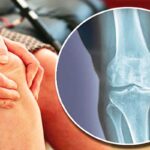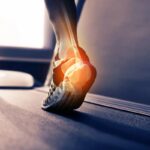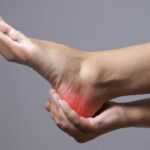
The foot and ankle are complex structures that play a vital role in our mobility and daily activities. However, they are susceptible to various conditions that can cause pain, discomfort, and limitations in movement. In this blog post, we will explore common foot and ankle conditions, their causes, symptoms, and the treatment approaches available to alleviate these issues. Understanding these conditions can help individuals seek timely medical attention, promote proper foot and ankle care, and improve overall quality of life.
- Plantar Fasciitis:
One of the most prevalent foot conditions is plantar fasciitis, which affects the plantar fascia—a thick band of tissue connecting the heel bone to the toes. It is commonly caused by repetitive strain, excessive physical activity, improper footwear, or biomechanical abnormalities. The hallmark symptom of plantar fasciitis is sharp heel pain, especially in the morning or after long periods of rest. Treatment options may include rest, stretching exercises, physical therapy, orthotic inserts, and, in severe cases, corticosteroid injections or surgery. - Ankle Sprains:
Ankle sprains occur when the ligaments supporting the ankle joint are stretched or torn due to sudden twisting or rolling movements. This can happen during sports activities, walking on uneven surfaces, or accidents. Symptoms include pain, swelling, bruising, and difficulty bearing weight on the affected ankle. Initial treatment involves rest, ice, compression, and elevation (RICE), along with the use of ankle braces or splints. Rehabilitation exercises and physical therapy are crucial for restoring strength and stability to the ankle. - Achilles Tendonitis:
The Achilles tendon, located at the back of the ankle, can become inflamed and irritated, resulting in Achilles tendonitis. This condition often develops from overuse, repetitive strain, or inadequate warm-up before physical activity. Symptoms include pain, swelling, stiffness, and a limited range of motion. Treatment typically involves rest, ice, stretching exercises,
physical therapy, and orthotic devices. Severe cases may require immobilization with a walking boot or, in rare instances, surgical intervention. - Bunions:
Bunions are bony protrusions that develop at the base of the big toe, causing it to deviate inward and crowd the neighboring toes. This condition is often hereditary but can also be aggravated by tight footwear or structural abnormalities. Symptoms include a visible bump, pain, redness, swelling, and difficulty wearing certain shoes. Non-surgical treatment options include wearing comfortable footwear, using padding or orthotic devices, applying ice, and
taking over-the-counter pain medications. In advanced cases, surgical correction may be necessary to relieve symptoms and restore proper alignment. - Morton’s Neuroma:
Morton’s neuroma is a painful condition that affects the nerves between the metatarsal bones in the foot. It is commonly caused by repetitive stress, compression, or irritation of the nerves. Symptoms include sharp or burning pain in the ball of the foot, tingling, numbness, and the feeling of having a pebble in the shoe. Treatment may involve wearingroomy footwear, using orthotic inserts, avoiding high-heeled shoes, and corticosteroid injections. In severe cases, surgical removal of the affected nerve may be recommended. - Conclusion: Foot and ankle conditions can significantly impact an individual’s daily life, mobility, and overall well-being. Recognizing the causes, symptoms, and available treatment approaches for these conditionsis crucial for early intervention and effective management. If you experience persistent foot or anklepain, it is important to consult with a qualified orthopedic specialist who can provide an accuratediagnosis and recommend suitable treatment options. By prioritizing foot and ankle health andseeking appropriate care, individuals can regain comfort, improve functionality, and enjoy an active lifestyle once again.




